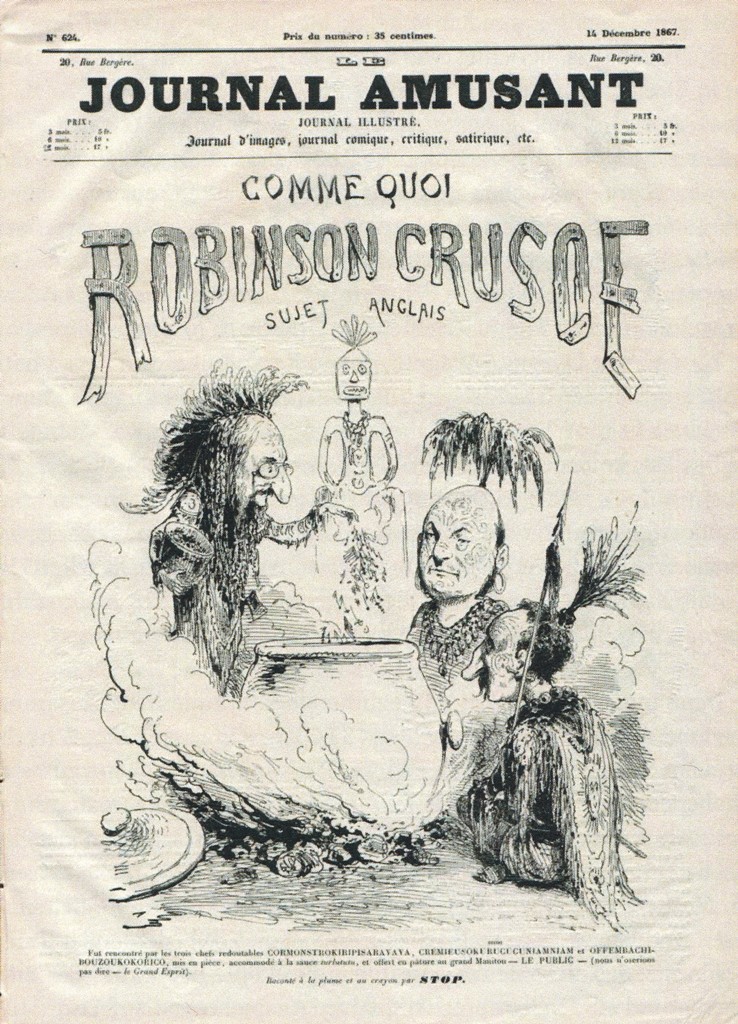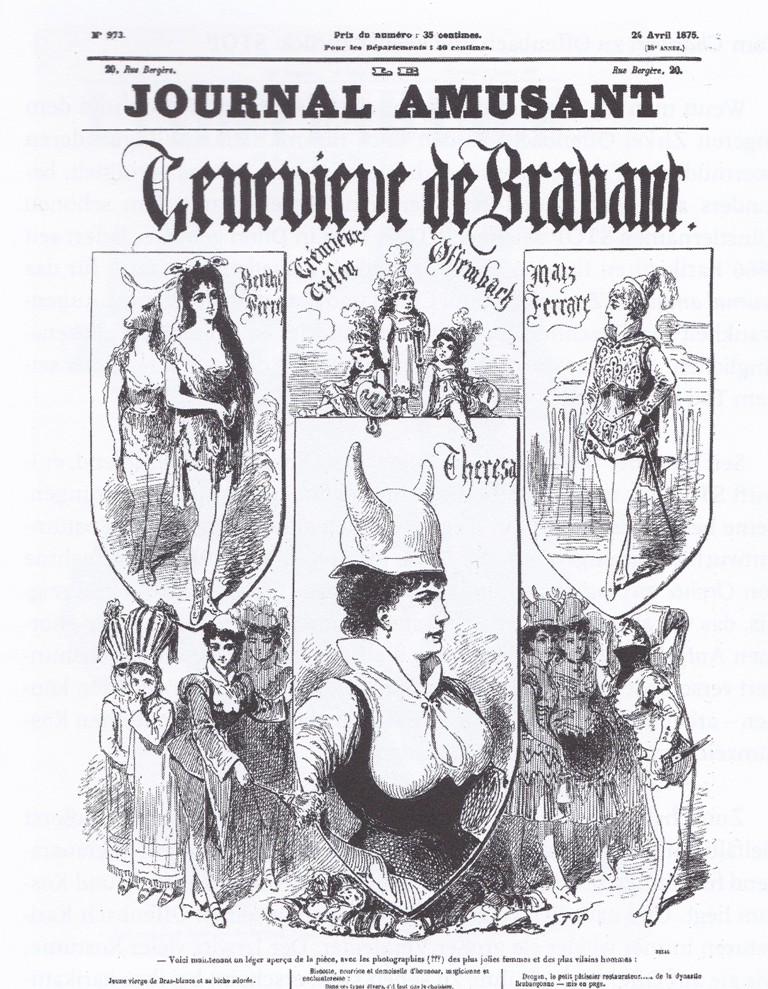Kevin Clarke
Operetta Research Center
6 August, 2019
Prof. Albert Gier is one of the most famous researchers of musical theater text books. He taught at the University of Bamberg from 1988 onwards, and he published many books on opera and operetta libretti in the course of the years. As a farewell tribute – he retired in 2016 – there was a special lecture series with nine different talks on various aspects that have now been issued as a book. The title: Sirengesänge, i.e. siren’s songs.

The cover of “Sirenengesänge” edited by Albert Gier. (University of Bamberg Press)
From an operetta perspective, two essays in this book are especially interesting. One is Mr. Gier’s own comparison of French and German operetta text books: “Französische und deutsche Operette. Gemeinsamkeiten und Unterschiede der Textbücher.”

The cover of the “Journal amusant” showing Offenbach and his librettists as part of “Robinson Crusoe” in December 1867.
The other essay, which I personally found even more fascinating, is Richard Armbruster’s “Maestro Offenbach – au grand galop!” It discusses the iconography of the Offenbach operetta in the French press. The fascinating aspect here are the little known illustrations of Offenbach shows that you will most likely not have seen in the standard Offenbach literature.
Mr. Armbruster outlines that several of Offenbach’s production partners were also active as illustrators in the French press, especially in satirical magazines. One was Louis Morel-Retz who used “STOP” as an artist’s name. In 1874 he created the costumes for the expanded Orphée aux enfers, but he also worked for the Journal amusant – making drawings that often focus on the costumes. For example his 1875 cover for that magazine showing the third version of Geneviève de Brabant.

The cover of the “Journal amusant” showing “Geneviève de Brabant” in April 1875.
He also made a rather amazing Robinson Crusoe drawing showing Offenbach as a bizarre cannibal king with his librettists Cormon and Crémieux; it appeared in December 1867.
Mr. Armbruster outlines how important press coverage was for Offenbach and that the composer was well aware that he had to offer the press constant news to remain in the spotlight with his shows. So it was quite handy to have his own production partners in newspaper and magazine offices. What better way to control the stories published about him!
Some of these stories came out even after his death. Albert Robida continued working after the 1870/71 war – and produced a cover for La Caricature in 1883 celebrating the 25th anniversary of the Orphée world premiere. On that cover we see Offenbach at the bottom left taking the harp away from God Almighty … and we see the Olympian gods with long noses, floating in the clouds. With “Miss Operette” pointing her long stick at them, about to push them aside. It captures the original essence of operetta – the disrespect, the fun, but also the sexiness.

The cover of “La Caricature” from January 1883, celebrating 25 years of “Orphée aux enfers.”
There are also various Robida drawings of individual shows such as Orphée and the little known La Haine (written with Sardou). They give a clear scene-by-scene impression of what these productions looked like on stage; as such they are remarkable visual documents that have not been fully acknowledged by Offenbach researchers, Mr. Armbruster says.

A page by Robida showing scenes from the expanded “Orphée aux enfers” production, it appeard in February 1874 in “La Vie parisienne.”
It would be great if someone could present a larger selection of these drawings discussed by Mr. Armbruster as a catalogue, because there are definitely intriguing. And leave you hungry for more, more, more!

A drawing by Robida showing scenes from the “La Haine” production, as seen in “La Vie parisienne” in December 1874.
Other essays in the collection deal with orientalism (“Orientalismus im Musiktheater des 17. und 18. Jahrhunderts”) and operas about artists (“Zynismus, Empathie, Liebe, Wahnsinn. Die Künstleroper – eine Betrachtung”). Authors are Norbert Abels, Adriana La Salvia, Ursual Mathis-Moser and others.
